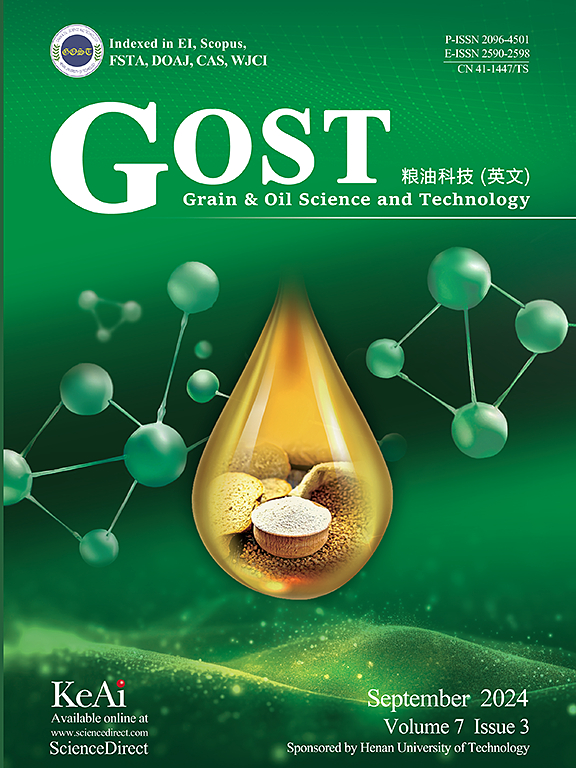Antifungal activity of curcumin-mediated photodynamic inactivation against Fusarium graminearum on maize
Q2 Agricultural and Biological Sciences
引用次数: 0
Abstract
The natural curcumin-mediated photodynamic inactivation (PDI) was developed, and its inactivation potency against Fusarium graminearum in vitro and in vivo was systematically investigated by fluorescence probe assay, trypan blue staining, scanning electron microscope (SEM), confocal laser scanning microscopy (CLSM), etc. Results showed that under the irradiation of blue LED, the photosensitizer of curcumin was excited to generate massive reactive oxygen species (ROS) in the cells of F. graminearum, and the PDI completely inactivated their mycelia and spores under the treatment of 150 μM curcumin and 10.8 J/cm2 irradiation. Further analysis found that the PDI ruptured the cellular microstructures, damaged the cell membrane by increasing its permeability and oxidizing the lipids, degraded the intracellular DNA and proteins inside the spores of F. graminearum. Meanwhile, the PDI also potently killed >99.99% spores of F. graminearum on maize under the treatment of 200 μM curcumin and 10.8 J/cm2 irradiation. Moreover, the PDI suppressed the production of zearalenone (ZEN), and residual ZEN could not be detected after the storage of maize for 10 days. Therefore, this study systematically explored the inactivation efficiency of curcumin-mediated PDI against both the mycelia and spores of F. graminearum, which provides a valid and promising method to control the fungal hazards in grains.

姜黄素介导的玉米小麦赤霉病光动力失活活性研究
采用荧光探针法、台盼蓝染色法、扫描电镜(SEM)、共聚焦激光扫描显微镜(CLSM)等方法,系统研究了天然姜黄素介导的光动力失活(PDI)对谷草镰刀菌(Fusarium graminearum)体外和体内的失活效果。结果表明,在蓝光LED照射下,姜黄素光敏剂被激发,在谷草酵母细胞中产生大量活性氧(ROS),而PDI在150 μM姜黄素和10.8 J/cm2辐照下,使其菌丝和孢子完全失活。进一步分析发现,PDI破坏细胞微结构,通过增加细胞膜通透性和氧化细胞膜脂质破坏细胞膜,降解胞内DNA和蛋白质。同时,在姜黄素浓度为200 μM、辐照强度为10.8 J/cm2的情况下,PDI对玉米上99.99%的禾谷镰刀菌孢子均有杀灭作用。此外,PDI抑制玉米玉米赤霉烯酮(ZEN)的产生,且贮藏10 d后未检测到ZEN的残留。因此,本研究系统地探讨了姜黄素介导的PDI对禾粒真菌菌丝和孢子的灭活效果,为控制禾粒真菌危害提供了一种有效而有前景的方法。
本文章由计算机程序翻译,如有差异,请以英文原文为准。
求助全文
约1分钟内获得全文
求助全文
来源期刊

Grain Oil Science and Technology
Food Science
CiteScore
7.30
自引率
0.00%
发文量
69
审稿时长
12 weeks
期刊介绍:
 求助内容:
求助内容: 应助结果提醒方式:
应助结果提醒方式:


